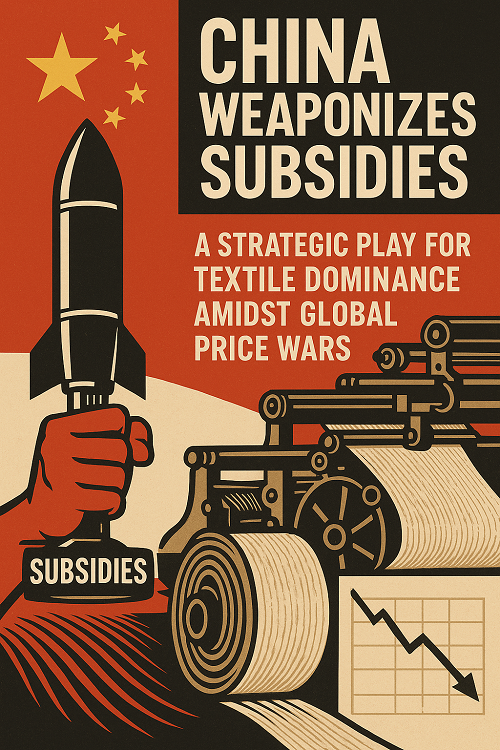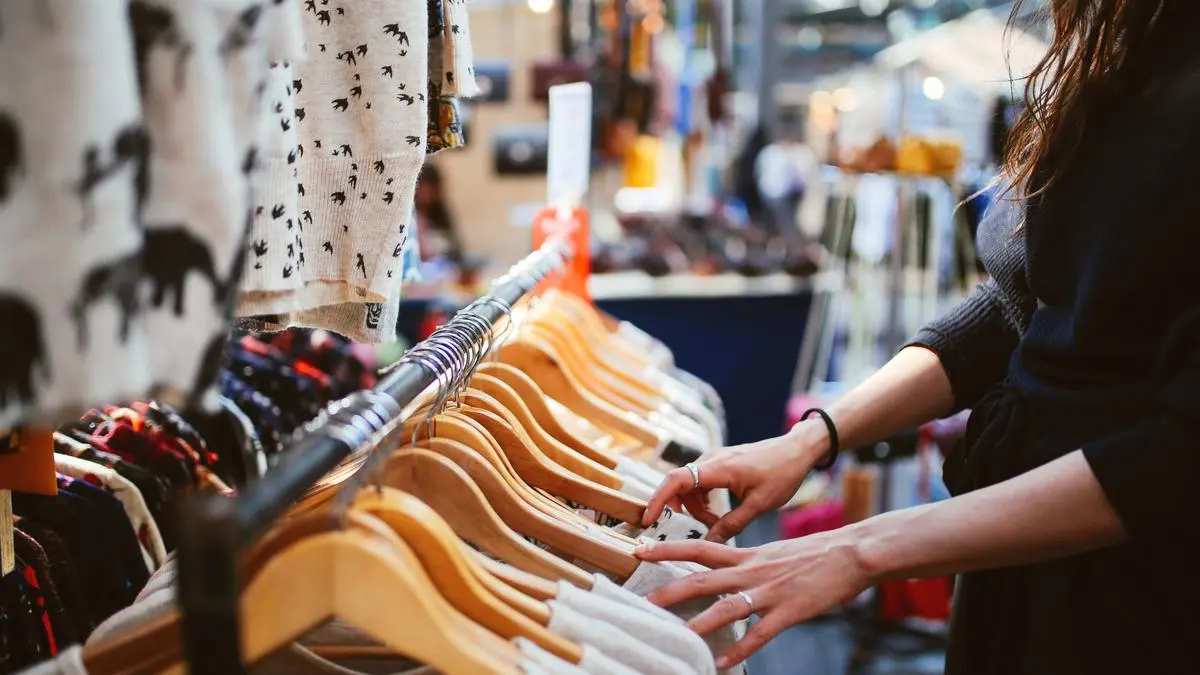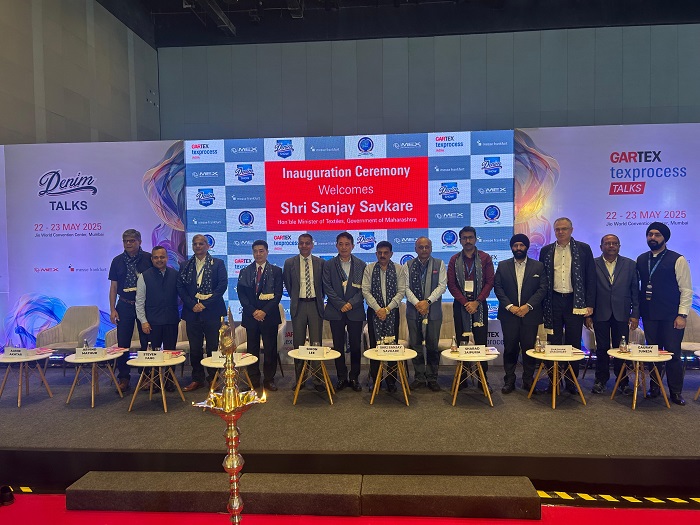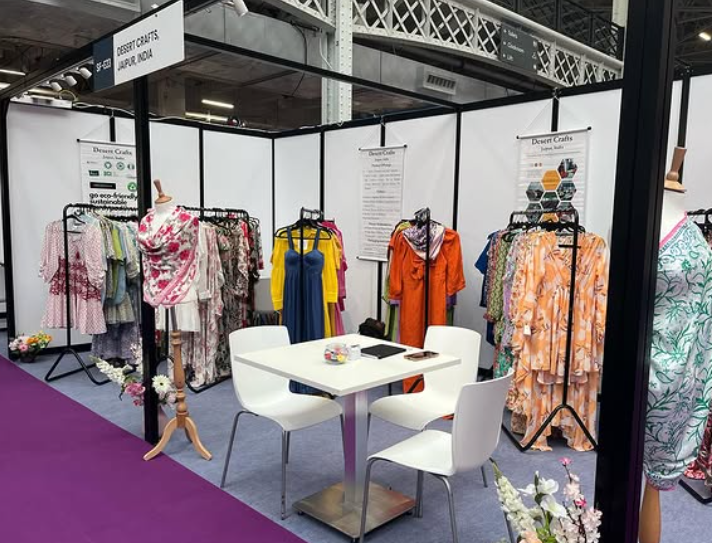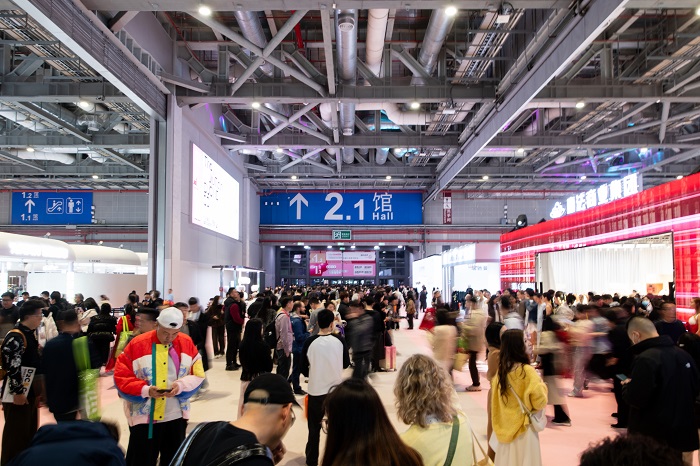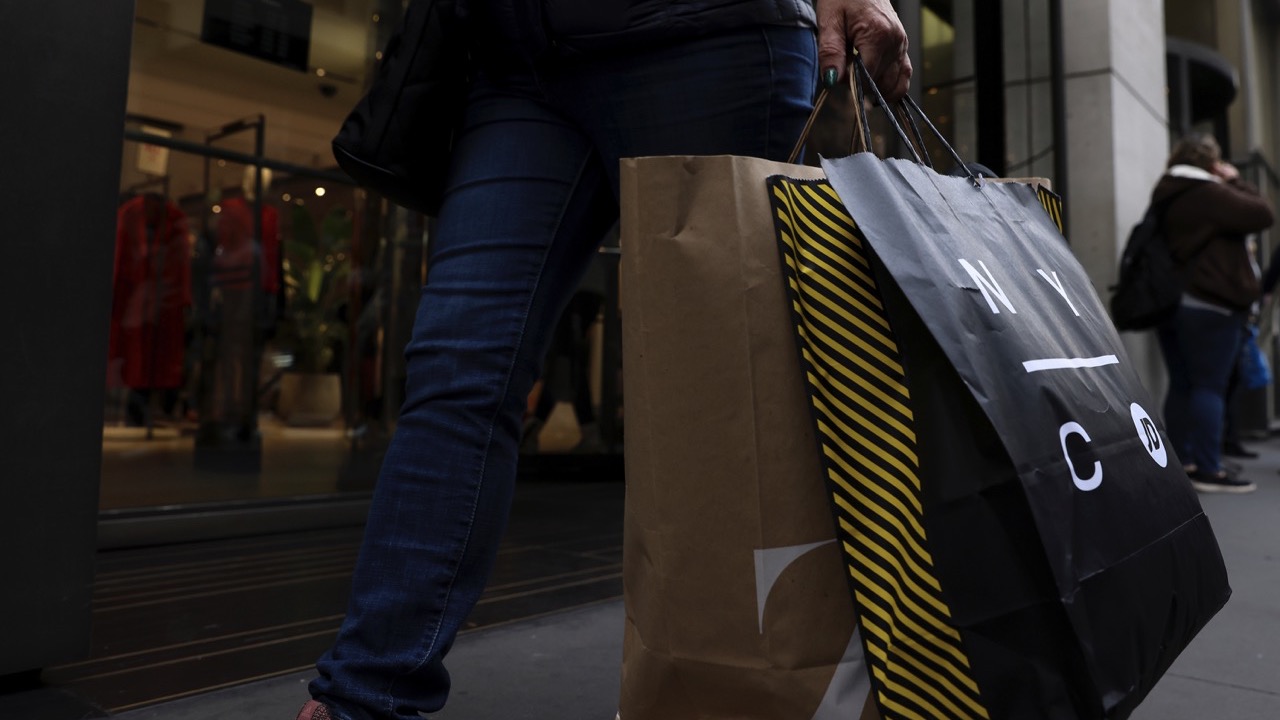Uster Quantum 4.0 is redefining the game for spinners by introducing a groundbreaking innovation – the Smart Duo technology. This advancement combines both capacitive and optical sensors, eliminating the need for spinners to choose between the two. Two years after its debut, industry feedback has confirmed the remarkable benefits of Uster's cross clearing and density detection functions.
Smart Duo, as the name suggests, employs cross clearing, harnessing the strengths of both sensor types. Capacitive sensors excel at pinpointing compact yarn faults, guaranteeing detection of dense thick areas containing more fibers. In contrast, optical sensors shine in identifying visually prominent issues in the yarn. By merging these signals, spinners gain an upper hand in detecting both compact and fluffy events.
Cross clearing events, denoted as X, also serve as vital indicators for maintenance, shedding light on spinning conditions. In one instance, an Indian spinner enhancing fabric quality while maintaining cutting levels proved the effectiveness of cross clearing. Meanwhile, the Quantum 4.0's density detection feature came to the rescue of a Chinese mill, saving over a ton of yarn by distinguishing high twist from regular yarns.
Uster Quantum 4.0, with Smart Clearing Technology, not only elevates yarn quality assurance but also addresses today's spinning mill challenges, offering flexibility, security, and prevention in a rapidly evolving market.
Cifra is set to redefine sportswear sustainability at Performance Days (Oct. 4-5, 2023, Munich) showcasing innovative prototypes of athletic apparel created from cutting-edge yarn compositions. The brand's latest collection places paramount emphasis on material sustainability, production processes, and durability.
Cifra's breakthrough lies in its use of regenerated and bio-based fibers, notably polyamide 6 and 6.6, sourced from both pre and post-consumer recycled materials. The patented WKS technology enables the creation of highly mechanically elastic garments without the need for elastomers. This not only guarantees exceptional fit and comfort but also ensures the garments are 100% recyclable.
In a significant stride towards eco-consciousness, Cifra introduces SENSIL ByNature, a nylon 6.6 yarn employing Biomass Balance technology, substituting fossil fuels with renewable sources derived from organic waste. This pioneering approach slashes 1400 kg of CO2 equivalent per ton of conventional Nylon 66, marking a milestone in the fashion and sportswear industry's green journey.
Cifra's commitment to durability is evident through rigorous independent tests, highlighting the superior endurance of its Warp technology compared to Weft alternatives. As sustainability regulations tighten worldwide, Cifra's focus on lasting performance underscores its dedication to a greener, more responsible future.
Milano Unica Shanghai's 18th edition, which concluded on August 30th, marked a significant resurgence in the presence of 44 elite Made in Italy textile and accessories manufacturers. Exhibitors reported higher turnout compared to March 2023, underlining the resiliency of the Italian luxury market. The event, hosted at the expansive Intertextile Apparel Fabrics fair, was a testament to the pivotal role of the Chinese market for Italian textile and accessory producers.
Italian exhibitors, showcasing their ethically-driven, technologically advanced creations, captivated the audience with their opulent presentation, epitomizing Italian luxury. This success was largely attributed to the ICE Agenzia's efforts in internationalizing and promoting Italian companies abroad. While visitor numbers surpassed those of March 2023, they fell just short of the 2019 edition.
Augusto Di Giacinto, director of ICE Agenzia Shanghai, emphasized the significance of the Chinese market for Italian exporters, emphasizing the Chinese consumers' affinity for Italian quality, design, and innovation.
Despite challenges, including Hong Kong's economic downturn, China remains the third-largest market for Italian textile exports, experiencing a 7.3% upward trend. Italian textile and accessory exports, with their unrivaled quality and sustainability, continue to thrive, making this sector the third-largest Italian manufacturing segment globally.
Milano Unica Shanghai reaffirmed its position as an essential event for global market engagement and international business relations. Alessandro Barberis Canonico, President of Milano Unica, recognized the enduring Chinese demand for Made in Italy products and the increased interest in top-tier women's collections, highlighting the event's significance for gauging future market developments.

The Bangladesh Garment Manufacturers and Exporters Association (BGMEA) in a report states, in fiscal year 2022-23, the readymade garment export contributed 84.5 per cent of Bangladesh’s total exports valued at nearly $47 billion. The report also published growth figures for Bangladesh’s major destinations. The US is its largest market where unfortunately, growth was negative at -5.5 per cent. However, garment exports to the UK and the EU fared much better, registering a positive growth of 11.8 and 9.9 per cent respectively.
Non conventional markets fare well
The growth figures in Bangladesh’s non-traditional markets fared exceptionally well, far ahead of its negative performance in the US, single digit growth in the EU and lowest double-digit growth in the UK. Brazil is where the growth percentage was off the charts with over 71 per cent, followed by Turkey at nearly 50 per cent and Japan with nearly 46 per cent. However, fiscal year 2023-24 is playing out differently as Bangladeshi sees moderate demand growth in both traditional and non-traditional markets, in the first two months (July-August).
Country-wise detailed apparel export data of the Export Promotion Bureau (EPB), and compiled by BGMEA shows, Bangladesh exported apparel items worth $7.99 billion, a growth of 12.46 per cent from $7.11 billion in July-August of this fiscal. During this period, Bangladesh exported clothing items worth $1.46 billion to the US, which is the largest single export destination for the nation’s garment exports. This marked a year-on-year growth of 2.95 per cent compared to the $1.41 billion exported during the same period in the previous fiscal year (July-August of 2022-23).
BGMEA satisfied with export performance
As per BGMEA after a realistic interpretation of the current readymade garment import scenario across major hubs, the country has fared well as per course. The spokesperson rated Bangladesh’s exports to non-traditional market as a success despite depressed orders from traditional markets. He reiterated that in the traditional markets like the UK and the EU, export figures when compared to the economic stress those markets are going through are good enough. Seeing the current trends BGMEA did not comment on the performance they expect next year as the global market is yet to return to normal.
Within the large EU market, apparel export has seen a decline of 6.3 per cent. Germany is the second largest single-country destination with exports worth $994 million down from the months of July-August of the last fiscal wherein exports was over $1 billion. During this period with 19.1 per cent year-on-year growth, Bangladeshi exports to the UK was worth $976.8 million, UK is the third highest destination for the country's readymade garment products. Exports were up from last year’s $819.9 million.
Apparel export to other major destinations such as Spain, France, Netherlands, Italy and Poland also registered positive growth of 26.9 per cent to $729.5 million); 8.5 per cent to $402.13 million; 19 per cent to $354.4 million; 28.7 per cent to $329.9 million, and by 26.4 per cent to $293 million respectively. Since July 2023, the US imports from Bangladesh’s apparel sector has swung favorably for the South Asian nation and very recently, it was confirmed in Dhaka that the US’s Generalized System of Preference program has included Bangladeshi apparel, making it duty free as opposed to the 11 per cent it is being taxed as customs.
Karl Mayer, the renowned textile machine manufacturer, celebrates its enduring partnership with Georg+Otto Friedrich (GOF), a pioneer in warp-knitted digital printing fabrics and technical textiles. This remarkable collaboration began 75 years ago when Karl Mayer delivered its first warp knitting machine to GOF. To commemorate this milestone, GOF recently gifted Karl Mayer with its seventh machine, showcasing their unwavering loyalty.
Over the years, this partnership has not only advanced warp knitting but also driven innovation. GOF played a pivotal role in testing and refining Karl Mayer's models, leading to the development of wider and more sophisticated machines. Today, they stand as the largest customer for Karl Mayer's cutting-edge HKS 3-M ON tricot machines, producing an impressive 650 tons of warp-knitted fabrics monthly.
However, their collaboration goes beyond technological achievements. GOF prioritizes sustainability, pioneering the use of recycled materials and environmentally responsible practices. They have introduced product lines made from recycled post-consumer PET, including DecoTex Blue, a fabric comprising over 60% SEAQUAL polyester fibers sourced from recycled marine plastic. The company has also committed to offsetting its CO₂ footprint through the PLANT-MY-TREE reforestation program, exemplifying their environmental responsibility.
Moreover, GOF emphasizes energy efficiency, with extensive solar installations covering their facilities, generating 30% of their electricity needs. Their commitment to sustainability positions them as leaders in the textile industry.
Karl Mayer Sales Manager Julian Schubert values this partnership not just for its technological achievements but also for the shared commitment to sustainability. As these two industry leaders continue their journey together, they exemplify how long-term collaborations can shape the future of sustainable textiles.
Today, during the Global Fashion Summit: Boston Edition 2023, the Global Fashion Agenda (GFA) unveiled the 2023 edition of the Fashion CEO Agenda. This concise report is designed to empower fashion industry leaders with strategies to create a net-positive impact on society, the environment, and the global economy. It marks a significant shift by introducing actionable guidelines for brands, retailers, and producers.
With less than seven years to fulfill the UN's Sustainable Development Goals, the fashion industry must urgently incorporate sustainability into its core strategies.
The Fashion CEO Sustainability Agenda prioritizes a respectful and secure work environment, better wage systems, resource stewardship, smart material choices, and circular systems for the fashion industry.
These priorities have been established through extensive stakeholder engagement, including a global Fashion Industry Target Consultation in partnership with the United Nations Environment Programme (UNEP).
Key action areas identified in the report encompass worker grievance mechanisms, fair compensation, water stewardship, and curbing overproduction. The report also emphasizes adopting industry-aligned targets, such as UNFCCC's decarbonization goals.
To complement the agenda, GFA introduced the 2030 Fashion Sector Vision, calling for sector-wide collaboration to achieve sustainability goals by 2030. Federica Marchionni, CEO of Global Fashion Agenda, urged fashion leaders to align their strategies with the Fashion CEO Agenda and work together to transform the industry into a net-positive force by 2050.
The CHIC, China International Fashion Fair's autumn event, held from August 28 to 30 at the National Exhibition & Convention Center in Shanghai, made waves in the global fashion industry. With a staggering 424 exhibitors and a record-breaking attendance of 53,137 visitors, the fair was buzzing with activity, firmly establishing itself as a pivotal player in the fashion business.
CHIC Autumn, renowned for its role as a supply chain solutions platform, caters to the entire fashion industry, serving as a crucial international business hub. This edition sought to create an innovative and inclusive platform for the fashion supply chain, drawing top companies from China and fostering dialogue, networking, and business connections.
Chen Dapeng, president of CHIC and China National Garment Association, emphasized the fair's significance, stating, "CHIC acts as a service agency for the entire fashion industry and trade," underlining its role in promoting global interconnectedness.
The event showcased the latest developments in the Chinese apparel market across various categories, from suits and down jackets to denim and emerging talents. Additionally, CHIC organized highly successful matchmaking events that facilitated productive interactions between exhibitors and visitors.
CHIC also hosted numerous seminars and fashion shows, further solidifying its status as a center of excellence in the fashion world. The WeChat Mini Programme played a pivotal role in streamlining the fair's operations.
Looking ahead, the spring edition of CHIC from March 6 to 8, 2024, promises to be even more spectacular, with over 1,600 exhibitors and brands, 170,000 visitors, and international participation already on the horizon. It will focus on brand presentations and retail, reaffirming its position as Asia's largest and most influential fashion fair.
A wave of innovative solutions for recycling post-consumer textile waste is surfacing in response to the European Union's latest Textile Strategy, a vital component of the broader Green Deal initiative.
Starting in 2025, the EU will institute a bold plan to separately collect over seven million tons of waste textiles each year. The responsibility for this collection will fall upon the brands that introduced these textiles to the market, thanks to a novel Extended Producer Responsibility (EPR) program. This paradigm shift means that such textiles will no longer be permitted to languish in landfills, go up in smoke through incineration, or be exported to other nations.
This move is necessary to address the colossal waste mountain that is expected to exceed 30 million tons by 2030 if prompt and resolute measures are not taken.
In response, companies across the textile value chain are developing new technologies and solutions to recycle textile waste effectively and efficiently. Some of the most promising innovations include:
Chemical recycling: This process breaks down textile fibers into their molecular components, which can then be repolymerized to create new fibers. Chemical recycling can be used to recycle a wider range of textile waste than mechanical recycling, including blended fabrics and synthetic fibers.
Mechanical recycling: This process shreds and cleans textile waste to produce recycled fibers that can be used to make new textiles. Mechanical recycling is a more established technology, but it is not as effective at recycling blended fabrics or synthetic fibers.
Design for recycling: This approach involves designing textiles and garments with recycling in mind. For example, using pure fiber blends and avoiding harmful dyes and finishes can make it easier to recycle textiles at the end of their life.
These innovations offer the potential to transform the textile industry into a more circular and sustainable system. By recycling textile waste, companies can reduce their environmental impact and conserve resources. Additionally, recycled textiles can be used to create new and innovative products, such as sustainable insulation and packaging materials.
The wave of innovation in textile recycling is a positive sign for the industry and the environment. With continued investment and research, these technologies could help to create a more sustainable future for textiles.
The latest apparel import data from the European Union (EU27) for the period of January-July 2023 shows a decline of 7.44% in value and 12.80% in quantity compared to the same period of 2022. This decline is seen across all of the top ten apparel supplying countries to the EU, including Bangladesh, China, Turkey, India, and Vietnam.
Bangladesh:
EU's import from Bangladesh dropped by 11.73% in dollar value and 14.50% in quantity during the January-July 2023 period. This decline is relatively higher than other top sourcing countries, such as China and India.
China:
EU's import from China, the top sourcing country, declined by 10.88% in dollar value and 10.59% in quantity during the January-July 2023 period.
India:
EU's import from India dipped by 5.79% in dollar value and 11.49% in quantity during the January-July 2023 period.
Vietnam:
EU's import from Vietnam dipped by 1.84% in dollar value and 8.99% in quantity during the January-July 2023 period.
Other top sourcing countries:
EU's import from other top sourcing countries such as Cambodia, Pakistan, Morocco, Sri Lanka, and Indonesia also declined in value terms during the January-July 2023 period.
Insight Textiles, a leading producer of specialty industrial fabrics in the USA, has announced significant investments in its infrastructure since its establishment in January 2023. These capital infusions into advanced production machinery and upgraded facilities are poised to boost production efficiency, reduce delivery times, and create immediate job opportunities for the surrounding community.
Located in Woolwine, Virginia, Insight Textiles is actively recruiting, inviting enthusiastic candidates to join their expanding team. Interested individuals can explore a wide range of job opportunities and submit their applications by visiting the careers section at Recruitment (adp.com). The company offers attractive compensation packages, comprehensive benefits, and a supportive work environment. They are currently focused on hiring for several roles in their Finishing Department.
Insight Textiles, latest machinery acquisitions, designed for maximum efficiency, will require less manual intervention, be cost-effective, and are set to be fully operational by the end of this month. It is enthusiastic about welcoming new members to our fabric finishing division. These new hires will play a crucial role in supporting the third shift of the Finishing operations, expected to increase customer deliveries by a significant 30%.
The company has also invested in facility maintenance, communication technology upgrades, and IT systems.
Apex Mills recent investments, combined with the recruitment of skilled professionals, are poised to propel its organization to unprecedented heights of success.
More...
- 1
- 2
- 3
- 4
- 5
- 6
- 7
- 8
- 9
- 10
China Weaponizes Subsidies: A strategic play for textile dominance amidst global…
Despite the narrative of a global apparel pivot away from China, the reality on the ground paints a different picture.... Read more
Shift in fashion's value proposition, can speed and sustainability coexist?
Expanding on the recent LinkedIn post by Lubomila Jordanova, CEO & Founder of Plan A and Co-Founder of Greentech Alliance,... Read more
Gartex Texprocess India 2025 kicks off in Mumbai with global focus
The 2025 Mumbai edition of Gartex Texprocess India opened its doors at the Jio World Convention Centre on May 22,... Read more
EU Horizon T-REX project data reveals challenges for textile-to-textile recyclin…
A new report from the EU Horizon T-REX (Textile Recycling Excellence) Project, while focused on piloting a data model to... Read more
Source Fashion to showcase global ethical sourcing solutions in July 2025 editio…
Source Fashion, the UK’s leading responsible sourcing show, is set to return from 8-10 July 2025 at The Grand Hall,... Read more
CHIC September 2025 to return in Shanghai with ‘Fashion Picnic’ theme
China’s leading fashion trade event, CHIC 2025 (September), will return to the National Exhibition and Convention Center in Shanghai from... Read more
US consumer confidence dips amidst economic uncertainty
In April 2025, the US consumer sentiment recorded a shift as confidence levels dipped, indicating potential headwinds for the economy.... Read more
Secondhand on the rise in Europe as it readies for a €26 bn fashion revolution b…
Across Europe, pre-owned garments are shedding their ‘used’ label and stepping into the spotlight as a mainstream force. A new... Read more
India-Bangladesh Trade in Turmoil: Retaliatory measures threaten regional commer…
The burgeoning trade relationship between India and Bangladesh has hit a turbulent patch, marked by a series of retaliatory trade... Read more
Peeling Back the Fabric: Glimpact study gives true ecological threads of apparel…
A groundbreaking new study by Glimpact, has pulled back the curtain on the often-obscured environmental footprint of the apparel industry,... Read more

